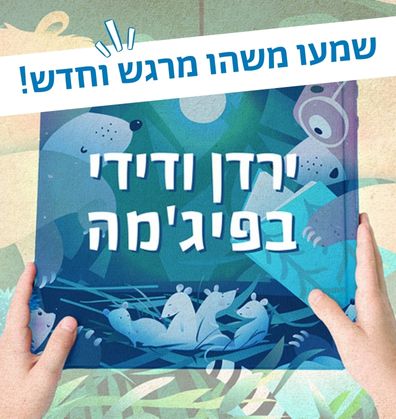שירה
סְּפָרִים
Book-Related Family Activities

Family reading advice
Simple rhyming stories can convey a value-based, meaningful message too. We recommend using the story as a basis for discussion, allowing for opinions to be expressed and questions asked, such as “How would you have felt if you had been in a similar situation?”
The Tree of Stars

“… And happiness shall be yours!”
Grandpa is happy to return home with his stars, calling them his treasure, and valuing them more than money. Following this story, you can discuss with your child and ask: “What makes you happy that money cannot buy?” Drawing? Bedtime stories? Perhaps a good-morning hug? Parents can also share – what is their treasures?
The Tree of Stars
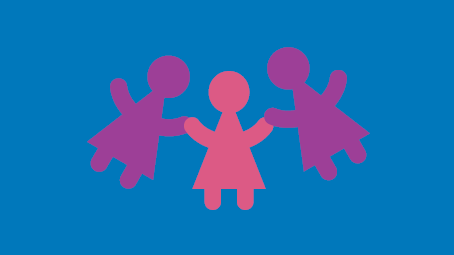
Our tree
If you were to have your very own imaginary tree – what would it grow? Hearts? Balloons? Perhaps stars too? You can draw and cut out the shape you have imagined, decorate it, and even write wishes or shared memories on it. The finished product can then be hung on a plant, branch, or tree near you.
The Tree of Stars

Starwatching
We may not find a real star tree, but we can always take an evening stroll and enjoy the sight of the stars twinkling in the sky. You can take this book along with you and read it together by starlight.
The Tree of Stars

QR code
Poet Leyb Morgentoy, 1905–1979, was born in Pinsk, Poland. He wrote this poem in Yiddish in 1938. Yoram Taharlev translated it, Nurit Hirsh composed music to it, and, in 1969, Chava Alberstein performed and recorded it.
Scan the QR code to listen to the song:
The Tree of Stars

Arts & crafts, songs, and other activities can be found on the Sifriyat Pijama Pinterest page.
The Tree of Stars

Family reading advice
A song that has been turned into an illustrated book gives readers the opportunity to experience it differently, understand it anew, or refamiliarize themselves with it. Therefore, when reading such books for the first time, try not to be tempted to “sing the book”, but instead to read it as you would any other story.
The wonderful children’s author and poet Ayin Hillel (1926–1990) was born and raised in Kibbutz Mishmar HaEmek. Although he was a landscape architect by profession, more than anything else he enjoyed writing poems for all ages. David Polonsky is among the most prolific Israeli illustrators. Internationally renowned, he has illustrated well-known children’s books, created film animation, held numerous exhibitions, and is the recipient of many awards.
What do the Trees do?

Time goes by
Questions stimulate discussion and thinking. You can look at the illustrations in this book and ask: What is the boy doing on each page? What does he look like in the beginning of the book? And what does he look like at the end? You can be inspired by the illustrations to look at old pictures of yourself, seeing how you have grown, and ask questions – What was I doing when I was one year old? And what am I doing now? What have I discovered and learned since then?
What do the Trees do?

What do they do?
What does a washing machine do? And what does the ceiling do? Following this book, you can walk around your home or outdoors, and ask questions about the things you see around you: “What do they do?”
What do the Trees do?

Discovering the world
This book asks many questions and gives a range of amusing answers to them. It invites you and your child too to explore and discover together; you can ask your child – What else do trees do? What else do clouds do? You can even make your own book of questions & answers. Write them down and add some illustrations. Any time a new question comes up, you can add it to your book, and look for the answer.
What do the Trees do?

QR Code
The music for Ayin Hillel’s well-known and well-loved song was composed by Naomi Shemer, and has since become an Israeli classic. Scan the QR code to listen to it.
What do the Trees do?

Arts & crafts, songs, and other activities can be found on the Sifriyat Pijama Pinterest page.
What do the Trees do?

Family reading advice – Recurring phrases
Many books written for toddlers have a recurring phrase that helps their target audience follow the story and join in the reading. The recurring phrase can be emphasized while reading using a special voice, body movement, or a change of reading pace. For example, when you read bo itanu (“come with us”), you can add an inviting hand gesture, or make the end of the phrase longer – veyesh etzlenu m-a-k-o-m (“and we have r-o-o-m”).
A Girl with an Umbrella

Hosting friends
The girl in this book invites the children to join her under her umbrella and “hosts” them. You can ask the children whether they like to host at home, and who they would like to host.
Sometimes toddlers find it hard to share their games when they host others at their homes. You can discuss that and explain that, just as the umbrella in the book is still the girl’s umbrella, even when she allows others to take cover under it, so do their personal belongings remain theirs when sharing.
A Girl with an Umbrella

Listen to the Song
You can listen to the song as sung on Kan Kids’ children’s show Parpar Nechmad, and join in the singing as well as the dance movements.
Lyrics and music: Datia Ben Dor
Performing Artists: Ester Rada, Uri Banai, Meital Raz, Ami Weinberg.
A Girl with an Umbrella

A family with an umbrella
How many family members can fit under a single umbrella? And how many can fit under a blanket? Or the dining-room table? This book can inspire you to find out how well you can all squeeze into various places in amusing and fun ways.
A Girl with an Umbrella
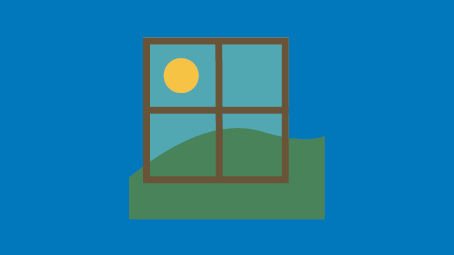
A walk in the rain
On a rainy day, you can pull on some boots, put on a coat, take an umbrella and go out for a walk in the rain! You can step into puddles and observe the special things that change around us when it’s raining – How many people are outside now? What do the skies look like? What happens when the rain falls on soil or the sidewalk? What kind of smell is in the air?
A Girl with an Umbrella

A Girl with an Umbrella

Family reading advice
Books on customs, symbols and holiday dishes enrich the holiday experience, helping to develop anticipation and curiosity before it arrives. This book should also be read together with your toddlers during the holiday, and even when it is over – so that, together, you can think back on the beautiful moments, melodies, colors, flavors and scents.
Lea Naor was born in Herzliya in 1935.
What? What? A Potato! [Mah? Mah? Tapuah Adamah!]

Discussion – cooking and having fun together
You can discuss the food you enjoy making at home, and how to make it – Which ingredients are used? Which utensils? What do you do in each step?
What? What? A Potato! [Mah? Mah? Tapuah Adamah!]

Listen to the song
Listen to the song Ma? Ma? Tapuah Adama! (What a Potato). You can join in, sing and dance, coming up with your own dance movements.
What? What? A Potato! [Mah? Mah? Tapuah Adamah!]

What an illustration
Every time you read this book, try looking for new interesting details in its illustrations – Where’s the parrot? What is it doing in each of the illustrations? What are the father and children doing? Which items and ingredients are on the table? And which objects do you recognize in the kitchen? Perhaps you can also find them in your own home and kitchen.
What? What? A Potato! [Mah? Mah? Tapuah Adamah!]
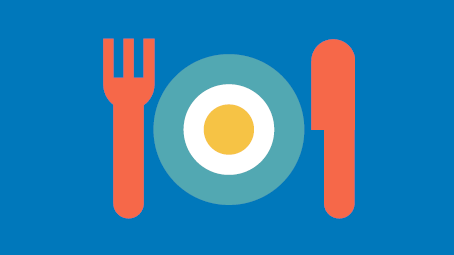
Step by step
While making latkes, or any other of your favorite foods, you can take pictures of the preparation process. These pictures can later be incorporated into a small photo album that will help you repeat the correct steps, as well as the names of actions and ingredients.
A recipe for latkes
Ingredients:
5 potatoes
1 large onion
2 eggs
Half a cup of flour
Half a teaspoon of sugar
1 teaspoon of salt
Frying oil
Method:
1. Peel and grate the onion and potatoes. Squeeze out all the fluids, and place in a bowl.
2. Add the rest of the ingredients – the eggs, flour, sugar and salt (as well as other condiments, if you so wish) – to the bowl, and mix them well.
3. Fry the latkes carefully in hot oil (one to one and a half tablespoons for each latke) until golden on both sides.
4. Place on a paper towel, and enjoy!
What? What? A Potato! [Mah? Mah? Tapuah Adamah!]

שלב אחרי שלב
בזמן הכנת לביבות, או מאכל אהוב אחר, תוכלו לצלם את תהליך ההכנה. מהתמונות אפשר להכין אלבום קטן שיעזור לחזור על השלבים ועל שמות הפעולות והמצרכים.
What? What? A Potato! [Mah? Mah? Tapuah Adamah!]

More arts & crafts, songs and activities can be found on the Sifriyat Pijama Pinterest page.
What? What? A Potato! [Mah? Mah? Tapuah Adamah!]

Family reading advice – Sharing experiences
Many books describe toddlers’ daily challenges: difficulty sharing, difficulty parting, the challenging transition from daytime to nighttime, and many more. When identifying a challenge with which your toddler is struggling, choosing a book on the subject and reading it together can be a good idea. Books invite us to share our feelings and experiences, and can offer empathy, encouragement and coping ideas.
Lea Naor was born in 1935 in Herzliya. She has written books, plays, screenplays and children’s poetry, and has also translated many books into English, such as the Dr. Seuss series. Her books and translations have won her many awards.
Partners

What is mine and what is ours?
You can discuss the things that are shared by all family members as opposed to those that belong to each of you separately. For instance: “We each have our own toothbrush – what does your toothbrush look like?”, “We all share this house together, who lives in our house?”
Partners

Dramatizing and swapping
You can dramatize this book using stuffed animals and have fun together: Swap the toys between you along with the song, and in the refrain az tekhef nihye shutafim bekhol hadvarim hayafim (“so soon we will share all the beautiful things”), you can hold the toy together, and demonstrate sharing.
Partners
Illustrations and animals
A cat, a dove, a turtle, a puppy and a young bird – all in one book! You can look at the illustrations, choose an animal together, imitate the sound it makes and act just like it according to the description found in this book. For example, if you choose the turtle “with its entire house on its back” – you can place a cushion on your back and walk on all fours. And how does the puppy with the spot wag its tail?
Partners

For more surprises, inspiration and ideas check out the Sifriyat Pijama Pinterest page.
Partners

Family reading advice – Finding your own way
Who says that stories must be read at bedtime? Maybe you prefer reading them in the afternoon? Or lying together on the rug, or having a stuffed toy join you while reading? Every toddler has his or her own personality and needs, and grownups, of course, have their own preferences too. You can look for the best reading time and method for you and your toddler, and create your own special story hour.
The Fly That Got Lost

Reading with movement
While you read, you can shoo the fly away together with your toddler, just like the child in this story: You can clap, jump with your entire body, or move only your hand, or sneeze ever so loudly, and then look right and left for the fly that flew away.
The Fly That Got Lost
QR code
Would you like to sing with the fly that got lost? Scan the code and listen to the song the “Fly That Got Lost”. You can dance, fly, and make buzzing sounds together.
The Fly That Got Lost

The buzzing finger
Your finger can become a fly too: Make buzzing sounds and wiggle your finger in the air as if it were a fly. You can see your toddler following the “flying” finger. You can place your finger on another area of your toddler’s body each time: his or her nose, cheek, arm or ear. You can say: “Buzz on the forehead” out loud, while going over the names of their body parts and laughing together. Once your toddler has become familiar with this game, you could invite him or her to make a finger a fly too.
The Fly That Got Lost

A tip for family reading
When reading a songbook, you can focus on one song at a time, read it several times, or sing it, if it has a tune. Try looking at the drawings together, and note where the toddler’s attention is drawn. Every so often, you can add another song from the book and see what reactions it evokes, and whether it’s fun and intriguing.
All Kinds of Animals and Me
Other animals and us
You will encounter various animals in the book. The toddlers will know some of them. Others will be new and exhilarating. Whenever you encounter animals nearby, you can draw the toddler’s attention to what’s special about the animal – “the bird has a beak”, “the ants march in a line”, or “the snail carries its house on its back”.
All Kinds of Animals and Me

Singing with your whole body
You can use gestures as you sing. For example, when you sing “Come, Little Butterfly”, you can invite the butterfly with a beckoning gesture, flap your hands, and tap on the toddler’s hand. Which gesture would you use for a monkey cracking up? Or a bear climbing a ladder?
All Kinds of Animals and Me
Inside my closet
A shirt? A swimsuit? Perhaps a dress? How about taking a look inside your closet, finding clothes you like, and saying when you usually wear them: Winter clothes, summer clothes, fancy clothes for special occasions, and all-time favorite clothes.
Why is the Zebra Wearing Pajamas?
Singing & dancing with the zebra
The verses of Why is the Zebra Wearing Pajamas? have been set to music and turned into a beloved children’s song. You may enjoy scanning the QR code, and proceed to sing and dance together.
Why is the Zebra Wearing Pajamas?
Illustrations – Zebra & friends
The zebra’s friends feature in the book’s illustrations: You could leaf through them together, find the various friends, name the animals together, and introduce them. Next, you could say the name of an animal you know, and then look for it in among the illustrations contained in this book.
Why is the Zebra Wearing Pajamas?
Why is the Zebra Wearing Pajamas?
Reading a poetry book
Books of poetry tell small stories from a children’s world of imagination, emotion and experience. You can choose in which order to read the poems or not even read all of them. You can choose to read a poem because of an intriguing illustration, an interesting title, or because it suited your mood. You can decide to read just one poem at a time, or skip ahead. You may enjoy discussing the poem: Did you like it and why?
I Love Drawing
Pleased to meet you – Nahum Gutman
He painted Israel in bright colors and told children’s stories in words and illustrations. If you scan the QR code, you will be able to discover Nahum Gutman’s books and paintings, and take a virtual tour of the Nahum Gutman Museum in Tel Aviv.
I Love Drawing
A game of “Which Poem am I?”
Take turns with your family selecting a poem and acting it out without speaking. The other players will try to guess which poem it is. You can also choose one that you all like, and act it out together, or read it out loud while adding matching dance moves.
I Love Drawing
Paint and tell
There are blank pages at the end of the book which you can use to make your own illustrations and then write stories just like artist Nahum Gutman and authoress Mira Meir did. Perhaps you and your family would enjoy writing a whole series!
I Love Drawing
I Love Drawing
Reading poems
The poems in this book present small moments in life. Every time you read together, we recommend selecting one poem, and reading it together. Does the poem remind you of something that once happened? This may be a good opportunity for you, parents, to share a childhood experience with your child, creating closeness and intimacy with them.
Why Do They Always Remind Me?
Pleased to meet you – Hagit Benziman
When did Hagit Benziman start writing? What does she write about, and why? You may want to scan this QR code to find out more about this author and her work.
Why Do They Always Remind Me?
Looking through the family album
You may enjoy looking at parents’ family photo albums together, searching for special childhood moments. You could also look at early childhood photographs of the children, and share information about the moments captured. Which memories do they evoke in you?
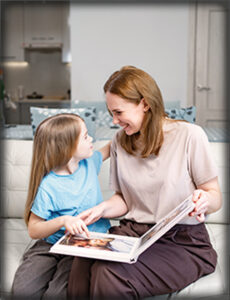
Why Do They Always Remind Me?
Dramatizing together
Do you have a favorite poem among those included in this book? If so, how about acting it out together, with the grownups playing the parts of the children, and vice versa.
Why Do They Always Remind Me?
Arts & crafts, songs and other activities are available on the Sifriyat Pijama Pinterest page
Why Do They Always Remind Me?
Reading, Singing and Moving
Let the toddler complete the repeating sentence: “Where to, where to? To kindergarten!”
You can add movements, clap hands or use musical instruments.
Where to, Where to? To kindergarten!
Our Morning Ritual
A fixed set of morning actions helps toddlers start the day well:
Prepare the clothes together, sing an encouraging song, collect leaves or a twig along the way, or say goodbye with a fixed, encouraging greeting.
Where to, Where to? To kindergarten!
Illustrations "Tell a Tale"
Look together and let the toddler find: Where is the bird? Is it on additional pages? Who accompanies the child to kindergarten? How do we get to kindergarten – by bicycle, walking or some other way? Who wears a hat and where is the dog?
Look at the last page and ask: “What are the children in kindergarten doing? What do you like to do at the nursery?”
Where to, Where to? To kindergarten!
Game: Where to?
Ask: Where to, where to? And each time choose a different place: To… The bath, the balcony, or to… The playground? Go together to the place you’ve chosen, hug each other and then say aloud: Where to, where to? To… the next place!
Where to, Where to? To kindergarten!
Where to, Where to? To kindergarten!

Songs and thoughts
The Sixteenth Sheep is an anthology of songs and stories that one can read one after the other, or select one at a time, according to the season, particular experience, or one’s mood. Could you write a song or story together about an everyday experience of yours? How about adding another verse to one of the songs found in the book?
The Sixteenth Sheep

That's happened to me too
While reading, you may want to discuss and examine the thoughts and feelings that emerge within both younger and older readers following the song. Does it remind you of experiences you have had? Parents, you may enjoy sharing your feelings and experiences nowadays and as children with your child.
The Sixteenth Sheep

When I grow up, I'm going to be a singer
Many of the poems in the book have become songs, and this may be a wonderful opportunity to listen to them, sing them together, and enjoy the tunes composed by Yoni Rechter and other musicians. You could record yourselves singing together, play along as you sing, or add a dance routine to your favorite songs.
The Sixteenth Sheep
When I grow up, I'm going to be a painter
Inspired by your favorite songs, you could be artistic in many ways: you could paint the green man using several shades of green, draw yourselves from the back, take a photo of a kindergarten when it is closed, or create the sixteenth sheep using cotton wool. When you have finished, you can show your work and ask: which song or story has inspired me to do this?
The Sixteenth Sheep

When I grow up, I'm going to be a painter
Inspired by your favorite songs, you could be artistic in many ways: you could paint the green man using several shades of green, draw yourselves from the back, take a photo of a kindergarten when it is closed, or create the sixteenth sheep using cotton wool. When you have finished, you can show your work and ask: which song or story has inspired me to do this?
The Sixteenth Sheep
Discussing – What can we see out of our window?
What can you see out of your window? What can you only see in your home? Can you see it through the window? What else makes you special as a family? Do you have a favorite song, or an activity you like to do together? Is there a fixed ritual on special occasions in your family, or something that will always make you all laugh? Perhaps there is a phrase or word that you have invented, or a word with a special meaning, that only your own family members understand? What is missing from your family that you wish to add? Something that would be seen through your window – a character, object, or animal? Perhaps something on which you could play a song?
It’s Me
Playing – it's me!
Who is this child? And who is this adult? – You may want to play a family game for boys, girls, adults, and children:
In each game round, a member of your family will think of one of the participants, and describe them indirectly. For instance: “The child I have in mind likes to play ball”, or: “The person I have in mind likes to drink coffee in the afternoon”. After the participant is described, everyone has to guess who the child or adult the player is thinking of is. You could also add friends and relatives with which all participants are familiar that are not physically present.
It’s Me
suggestions for game cards and arts & crafts can be found on the PJLibrary Pinterest page.
It’s Me
Reading differently:
Reading differently: Reading poetry and prose are different experiences. The nursery rhymes in this book are short and catchy, and are accompanied by Shulamit Tzarfati’s joyful and colorful illustrations. You may want to ask your child to leaf through the book, picking a different rhyme each time. As you re-read the book, your child will become familiar with the words, and recite them on their own.
Just You and Me: Songs for Toddlers by Bialik
Singing together
Singing together: Some of the nursery rhymes in this book have been put to music. If you do not know the tunes, you could look them up on the internet, listen to them, and sing along with your child. You could also accompany your singing with simple musical instruments: a tambourine, bell, harmonica, or even two wooden spoons.
Just You and Me: Songs for Toddlers by Bialik
Putting on a show
Putting on a show: You may want to suggest that your child use some toys and stuffed animals to act their favorite rhymes out. You may also enjoy adding some choreography: riding a broomstick while singing “Parash” [Horseman]; setting up a pots & pans band and dancing around to “Makhelat Nognim” [The Band]; or flying like butterflies in the footsteps of “Haperach Laparpar” [The Flower to the Butterfly].
Just You and Me: Songs for Toddlers by Bialik
For the chain continues yet
For the chain continues yet: Do you remember any songs you learned as children? After reading this book, perhaps you could try to remember songs you once knew off by heart, sing them, and introduce them to your children too.
Just You and Me: Songs for Toddlers by Bialik
Hayim Nahman Bialik
Hayim Nahman Bialik (1873–1934) – Israel’s national poet
Hayim Nahman Bialik, one of Hebrew Literature’s greatest contributors in the Modern Era, has greatly impacted Modern Jewish culture. Bialik wrote stories and poems for both children and adults, many of his publications were translated into various languages, and a fair share of his poems put to music. His lifelong achievement was building a bridge between the Hebrew preserved in Jewish literature for thousands of years, and the language reborn at the turn of the 20th century in Eretz Israel.
Just You and Me: Songs for Toddlers by Bialik
Proposed Family Activities:
- Unlike a story, poem collections may be read in any order we choose. Which poems do you and your child like best? You could read them over and over again, look at the illustrations together, and ask your child to pick a different poem each time.
- You may want to discuss being wet with your child: do they like to get wet? Can we manage without water? How does our family help save water?
- You may enjoy going on a puddle-and-squirting walk. Don’t forget your boots and umbrellas! When you are dry again, return to this book and read some more wet poems.
- Sometimes the rain keeps us from going outside. You may want to prepare a game box for rainy days. Ask your child to decorate an empty shoebox, and fill it up with little surprises: stickers, crayons, bubble-making tubes, and illustrated notes with ideas for family activities on rainy days (word games, book reading, baking etc.). Hide the box, and only open it when it rains!
- Has the first rain fallen yet? What will our rainfall be this year? Your child can be wait for the rain and monitor it by making a rainfall calendar with you. Every evening in winter, draw the appropriate drawing if it had rained that day. At the end of the season, you could count how many days of rainfall there were.
- Do you know any other story or poem about the rain (such as Mira Meir’s Shluli, Magafayim by Miriam Roth, or Ruth Kalderon’s adaptation of Sippur al Geshem)? You may want to look for them at home or at the library, curl up together in a warm (and dry) spot, and read them.
The Wet Book
Proposed Family Activities:
- You may want to sit close together, read the story, and look at the illustrations. Perhaps you could look for indications of the differences between Leah and Rivka’s life stories. After reading the story for the first time, you may enjoy reading or telling the story together, each of you playing a different role: one of you can be in charge of telling Leah’s life story, the other – Rivka’s.
- Leah and Rivka were fluent in many languages, among them music and drawing! Perhaps you could pick one word, an emotion or object, and think of different ways and languages in which to express them – in words, movement, art etc.
- How much does your child know about your own childhood? You may want to set up a time for “getting to know one another session”. You could encourage your child to ask you questions, or prepare a scrapbook together of landmarks in yours and your child’s lives – at home, with the family, in the neighborhood with friends.
- At the basis of Leah and Rivka’s friendship is their love of music and art. Do you also like to sing? Do you happen to play a musical instrument? You may enjoy making a songbook filled with all your favorite songs, and invite your friends and family to a night of song and dance.
- When Leah and Rivka were unable to meet in person, they wrote letters to one another. Perhaps you could suggest that your child pick a friend or family member with whom to correspond. The letters should be handwritten and drawn, and just like old times – put them into envelopes, stick a stamp on, put them in the mailbox, and feel your excitement mount as you wait for a response.
- Do you know any other works by Leah Goldberg? You may want to look for more of her stories at home or the local library: The Absent-Minded Guy from Kfar Azar (Hamefuzar Mikfar Azar), Fibber the Storyteller (Mar Guzmay HaBaday), Wonders and Miracles (Nissim VeNiflaot), or her poetry book, What Do the Does Do? (Ma Osot HaAyalot?)
Yakinton: A Story about Friendship and Song
האזינו לסיפור "הדלת הירוקה"
אנו מזמינים אתכם/ן להאזין להקלטה הקסומה של הסיפור “הדלת הירוקה”, מאת: רינת הופר | איורים: רינת הופר | הוצאת: כנרת זמורה (כיתות א’)
יוצרים ומגישים – ירדן בר כוכבא – הלפרין ודידי שחר
מוזיקה, עיבודים ונגינה – טל בלכרוביץ’
פתיח ולחן לשיר “אסור” – דידי שחר
מוכנים/ות? מת – חי – לים! ▶️
The Green Door
Proposed Family Activities:
- You may want to sit comfortably and read these poems together. Which of them are your favorites? And which are your child’s? do you both like the same ones? And what about the characters, with which of them did you identify? Did these poems remind you of any past experiences you may have had?
- Perhaps you would enjoy looking for the various clocks in the illustrations. Some of them are real and hanging on a wall, while others are imaginary, appearing as a girl’s curls or as onion bulbs. When do the clocks show the time, and when are they an indication of time going by? Have you or your child ever felt that time was standing still? And when does it “fly” and disappear before you realize it?
- Even “small”, routine, day-to-day moments can turn into a poem, drawing, or story. Perhaps you and your child could select such a moment in the day you have just had, discuss it, and create something by which to depict it.
- Rinat Hoffer often writes and draws about the writing and illustrating experience. You may want to look through the book together, and find the pencils in the illustrations. Have you found the one that resembles a magic wand? Or the one that looks like a key? How about the vase in which pencils make up a colorful, flowering plant? There are others too, see if you can find them all.
- You may enjoy discussing the magic of creating, and what you would do if you had such a magic pencil.
- The illustrations in this book combine printed letters such as the ones you might find in newspapers with pages from old books. You may want to create a collage with your child from printed documents you no longer need or old newspapers. What emerges from such a combination?
- Rinat Hoffer has written many other stories and poems, such as Hanan the Gardener (חנן הגנן), Somebody (מישו), and Purple Monster (מפלצת סגולה). You may want to look for them at the library or at home, and read them together too.
The Green Door
Proposed Family Activities:
- Unlike stories, a collection of poetry can be read in any order. Which poems were your favorite? And your child’s? Feel free to read the book over and over again, asking your child to pick just one or two poems at a time, and returning to your favorites time after time. After a while, your child will know the poems, and join in on your reading, completing the rhyming lines.
- Each of the poems in the book can be acted out using items found in every home. You may want to select one of your favorite poems and act it out together. You could also put it to music, or a certain rhythm, using a musical instrument. You may also enjoy putting together a small dance to go with your favorite poem.
- You may like to ask your child to place their head on your lap and close their eyes. As you read, ask your child to imagine the poem, and try to think how they might have illustrated it. When your child opens their eyes again, show them Inbal Leitner’s illustration, and ask them whether they had imagined the poem as Inbal had. Perhaps you would then like to draw the illustration as you imagined it would be.
- If you look at the illustrations, you will notice the embroidery by Elina Zashkevich-Chipiga. Perhaps you could also take out colorful thread, and embroider your child’s name onto their backpack, or decorate a pillow cover.
- Shlomit Cohen Asif’s poems provides us with insight into a child’s inner world, as well as a wonderful opportunity to hold an open discussion on feelings. In the poem Fear sat on the blue chair, even Fear is scared of being alone. You may want to share your fears with one another, and try to find ways to overcome them together.
- White sheet, what will you become? Let your imagination run wild with a white sheet of paper. You could write, paint, or doodle on it, roll it into a ball, make a tiara out of it, or perhaps a kite, or pirate ship, being creative and drawing inspiration from the poems in the book.
- Shlomit Cohen Asif has written over 70 books. Do you know any other work by her? You may want to look for more stories and poems by her at home, in your kindergarten library, or the public one, and enjoy reading them together.
Enjoy reading and discussing the book together!
Shlomit Cohen Asif was born in Iraq in 1949, and immigrated to Israel with her family at the age of 18 months. She wrote dozens of children’s books containing tales, stories, and poems. Among her well-loved works are Mamushi the Rabbit, Three Nice Mice Birthdays, and When the Star fell into a Puddle. Shlomit Cohen Asif is a well-loved and respected writer, and many of her poems have been put to music, translated into foreign languages, and adapted to stage productions. Over the years Cohen Asif has won many awards for her work, among them the Ze’ev Prize for Children’s Literature, the Bialik Prize, and the ACUM Prize for Lifetime Achievement in Children’s Literature.
Color Number Eight
My Flower
You may want to take the time to leaf through the book together. Which poems did you like best? And which flowers? Unlike a continuous tale, a collection of poetry may be read at any order – you could choose a flower at a time, and read the poem about it together.
Mr. Savyon [Senecio] and Ms. Rakefet [Cyclamen]
Where's the Frog?
There are hidden animals on every page of the book. Your child may want to look for them in the illustrations. Have they found the frog, bees, chameleon, and caterpillar?
Mr. Savyon [Senecio] and Ms. Rakefet [Cyclamen]
Savyon and Ms. Rakefet – the Musical!
You may enjoy drawing and coloring your own Mr. Savyon, Ms. Rakefet, or other characters from the book, glue them onto popsicle sticks, and put on a show based on the poems.
Mr. Savyon [Senecio] and Ms. Rakefet [Cyclamen]
Repeating Rhymes
You may want to read the poems several times. After a while, your child will know them, and finish some rhyming lines for you.
Mr. Savyon [Senecio] and Ms. Rakefet [Cyclamen]
Following Flowers
Which flowers grow near your house? You could take a walk, and look for flowers: taste a wood sorrel (חמציץ, Hamtzitz), touch the thorns of a rose (ורד, Vered), blow on a white Senecio (סביון, Savyon), or smell a wonderful daffodil (נרקיס, Narkis). Are the flowers you found similar to the illustrations in the book?
Mr. Savyon [Senecio] and Ms. Rakefet [Cyclamen]
A Visit to the Nursery
Perhaps you would like to visit a nursery, and choose bulbs, seeds, or a plant in a flowerpot together. Your child could help water the flowers at home, and watch them grow.
Mr. Savyon [Senecio] and Ms. Rakefet [Cyclamen]
Activities You Can Do at Home
- “Take a walk” with your children through the pages of this book. Examine the illustrations closely and find what is being described in the song. The illustrator, Liat Yaniv, added details that do not appear in the text. See if you can find them!
- The illustrations are masterpieces of glued strips of colored paper. Even very young children can make a picture by gluing strips of paper. You can tear or cut pages from old magazines and make a colorful collage out of the strips.
- The song “A Short Walk” has a simple melody with a beat that is well suited to the pace of walking. If you know the tune, you might sing the song together. You could also find other songs by Naomi Shemer and put together a little Naomi Shemer Song-Book for a family singing night.
- The song’s lyrics reflect the landscape of Naomi Shemer’s childhood, which she spent on a kibbutz by the Sea of Galilee. What does your own neighborhood look like?
- Like the children in the song, you might go on a short walk close to home. Each member of your family could take turns saying what s/he sees: “I see an ant!” “I see a bird!” Do you all notice the same things?
- Going for a walk together offers a wonderful opportunity for conversation. You might ask your children what excites and what amazes them, and then share your own thoughts and feelings with them.
- After your walk is over, you might sketch the route from your house to the children’s kindergarten, and then add illustrations showing the plants and creatures that you met along the way.
A Short Walk
דוד פולונסקי המאייר
דוד פולונסקי המאייר – פרופיל אמן באתר “הפנקס”
I Gave A Flower to Nurit
לבחור שיר אחד או שניים בלבד ש"מדברים אלייך"
לפני שאת מתייחסת לספר בגן, כדאי לקחת אותו הביתה ולקרוא בעיון את השירים השונים. אין הכרח לקרוא את כל היצירות בגן! אפשר לבחור שיר אחד או שניים בלבד ש”מדברים אלייך”. האם יש שיר שאת זוכרת מילדותך? האם שיר אחד אהוב עלייך יותר מאחרים, או מתאים במיוחד למציאות של ילדי הגן בתקופה זו?
I Gave A Flower to Nurit
לקרוא את השירים בקבוצות קטנות
מומלץ מאד לקרוא את השירים בקבוצות קטנות ולעודד שיחה פתוחה שמחברת אותם למצבים חברתיים ורגשיים של הילדים.
I Gave A Flower to Nurit
לחזור על הקריאה מספר פעמים ואף לעודד את הילדים ללמוד לדקלם אותם בעל-פה.
קריאת שירה בגיל הרך מזמינה התייחסות לצלילים, חרוזים, ושעשועי מילים. כדאי לחזור על הקריאה מספר פעמים ואף לעודד את הילדים ללמוד לדקלם אותם בעל-פה.
I Gave A Flower to Nurit
"איך שיר נולד?"
“איך שיר נולד?” גם ילדים צעירים יכולים ליצור שירה מקורית, שמבטאת את הרגשות וההווי שלהם ואת הסתכלותם על העולם. ילדים צעירים יותר “חופשיים” ממבוגרים ומטבע הדברים הם “משוררים מלידה”. בעקבות השירים באוסף, הילדים יכולים ליצור ולצייר שירים שלהם.
I Gave A Flower to Nurit
אפשר ללמד את הילדים את המנגינה של השירים
לחלק מהשירים באוסף מנגינה, אחרים מזמינים המחזה בעזרת בובות או תחפושות. אפשר ללמד את הילדים את המנגינה של השירים המולחנים, לשיר, להציג ולרקוד יחד.
I Gave A Flower to Nurit
להזמין את ההורים והילדים לערב "שירים של פעם"
כדאי להזמין את ההורים והילדים לערב “שירים של פעם” בגן. זו הזדמנות להכיר לכולם יצירות שהן “נכס צאן ברזל” של המורשת הישראלית, וגם לבקש מהורים שלא נולדו בארץ ללמד כמה שירי ערש מתרבויות שונות. אפשר לקשט את הגן עם כוכבים, לשיר ולהמחיז את השירים, להגיש שוקו חם, וכמובן – לבוא לבושים בפיג’מה!
I Gave A Flower to Nurit
Family Activities
- Aya Gordon Noy used the technique of collage to illustrate the book, combining her drawings with various materials. With the book as your inspiration, you may want to make your own scrapbook using the collage technique, creating words that begin with each letter.
- Does your child know all the lyrics to the song? Each page contains a surprise, words or objects that are not mentioned in the song. Have you identified them all? Can you add more?
- This song was written by Israel Prize laureate Naomi Shemer. Do you know the tune? You may enjoy singing it together, and even making up a dance to accompany the lyrics. What other songs by Naomi Shemer do you know? You may want to make an illustrated songbook containing her songs, and organize a family sing-a-long.
- Letters can be found in many places: on street signs, in newspapers, on food packaging, shopping lists and more. You could choose each letter at a time, and look for it in various places around you.
- The song mentions words from different content realms – fauna & flora, emotions and gestures, body parts etc. You may enjoy playing a game, whereby you walk through the house and look for words beginning with different letters and sounds.
- Do you remember how you learned to read and write? Did you celebrate in any special ceremony? Did you also sing the Alef Beit song? You may want to share these memories with your child.
This is the last of the Sifriyat Pijama books for this year. We are certain that your children will enjoy returning to the beloved books they received, read them with you again and again, and in time – also on their own.
“S for Shalom and T for Thank You!”
Alef-Beit
Proposed Family Activities:
- Perhaps you would enjoy looking at the illustrations and finding the child’s three friends, and their dog, who appear on almost every page. What are they doing in each picture? Are they taking part in the child’s adventures?
- You may want to look through the book together, and read the poems out loud. Unlike a story with a plot, a collection of poems can be read in any order you like. Is there one poem you consider to be your favorite? You could try to learn it off by heart.
- You could also try to write short imaginative poems about something you had supposedly done, or had happen to you.
- Following these short rhymes, you may want to play with words, and make up your own funny rhymes. Does your first name rhyme with anything? And does your other family members’
- The child in the poems experiences funny, unexpected adventures: he rides a cloud; fights giants; and takes a walk in the street with an elephant. Perhaps you’d like to imagine yourself as the child: what would the spaghetti have turned into then? Who would you have taken elephant-back riding? And who would you allow into your secret room? Perhaps you would like to illustrate your own imaginative poems, or draw your secret room.
- Using your imagination may help to cope with daily limitations or difficulties. You may want to think of everyday situations together in which our imagination could help, and ask questions such as: “If I were as tall as a giraffe…”; “If I could fly in the sky…”, or “If I could be in two places at once…”. You may enjoy drawing these imaginary situations, and create your own “If I were…” scrapbook.
Once I Knocked Down Three Giants
Anda Amir (1902–1981)
Israeli children’s poet and author, Anda Amir, was born in Poland, and immigrated to Israel in 1920. She wrote many children’s poems that accompany Israeli children to this day, among them The Hedgehog Wanted to Dance, The Sparrow, and Golden Ship. For her numerous stories and translations Amir was awarded the Bialik Award in 1936, and the Israel Prize in 1978.
Uncle Moon in the Sky – Collected Poems
A different kind of reading
Reading a poetry book and a storybook is not the same. The poems included in this collection are short and catchy, and you may enjoy reading them over and over again. You could invite your child to leaf through the book, and select a different poem each time. In a little while, your child will know the words, and be able to recite them on their own.
Uncle Moon in the Sky – Collected Poems
Putting on a show
The animals in the book are humanlike: the teddy-bear takes care of the doll; the moon loses its hair; and the bunny goes shopping. You may want to suggest that your child use some toys and stuffed animals to act out their favorite poems.
Uncle Moon in the Sky – Collected Poems
Remembering rhymes
Do you remember poems you used to recite as a child? After reading this book, you may want to try and remember poems you once knew off by heart, and introduce them to your child.
Uncle Moon in the Sky – Collected Poems
Singing together
Some of the poems included in this collection have been put to music. If you do not know the tune, you could look it up online, listen to it, and sing together. You may also enjoy accompanying your singing with simple musical instruments: a tambourine, bell, harmonica, or pair of wooden spoons.
Uncle Moon in the Sky – Collected Poems
Do you know the tune to this song?
You can sing it together. You may want to put your fingers together as if you were pinching salt to form duck heads, and use your forearms as their necks.
קישור לשיר
Two Ducks
You may also want to slip socks on your hands
as well as your child’s, and chant the song together. You could compare the lengths of your forearms (the ducks’ necks) to see whose are longer, yours or your child’s?
Two Ducks
enjoy hiding games
The illustrator, Raaya Karas, developed a search theme in her illustrations. You may wish to flip through the pages of the book with your child and notice where Grandma was looking for the ducks. Just like in the song, you could enjoy hiding games – peekaboo, hiding various objects around the room, and of course – hide-and-seek in or outside the house.
Two Ducks
be reminded of more finger-play songs
This is a good opportunity to be reminded of more finger-play songs such as This Little Piggy, Itsy-Bitsy Spider and the Hebrew Grandma made Porridge (Savta Bishla Daysa) and I have Ten Fingers (Esser Etzba’ot Li Yesh). These involve tickling and bouncing on one’s knees. Do you remember the songs you were sung to as a child? Or songs in other languages?
Two Ducks
The ducks are portrayed as two friends,
The ducks are portrayed as two friends, who are different from one another but enjoy doing everything together. You may want to speak to your child about the things they like to do with their friends and siblings.
Two Ducks
Has your child seen a real duck?
Has your child seen a real duck? When visiting the zoo or looking at picture-books, you may become familiar with various types of ducks, and enjoy comparing them to the illustrations in this book. What makes them similar? What makes them different? What color are they? Are their necks long too?
Two Ducks





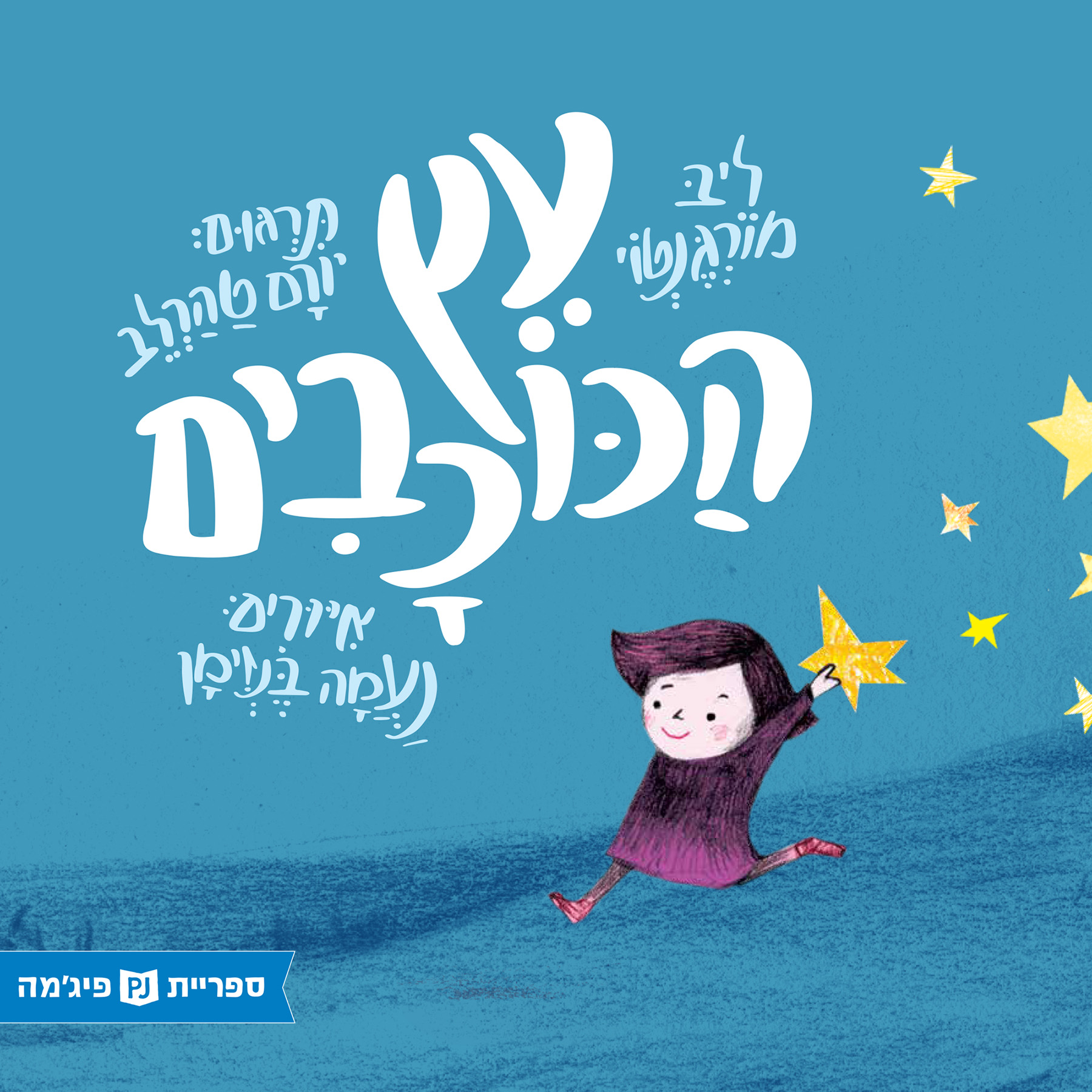 The Tree of Stars
The Tree of Stars 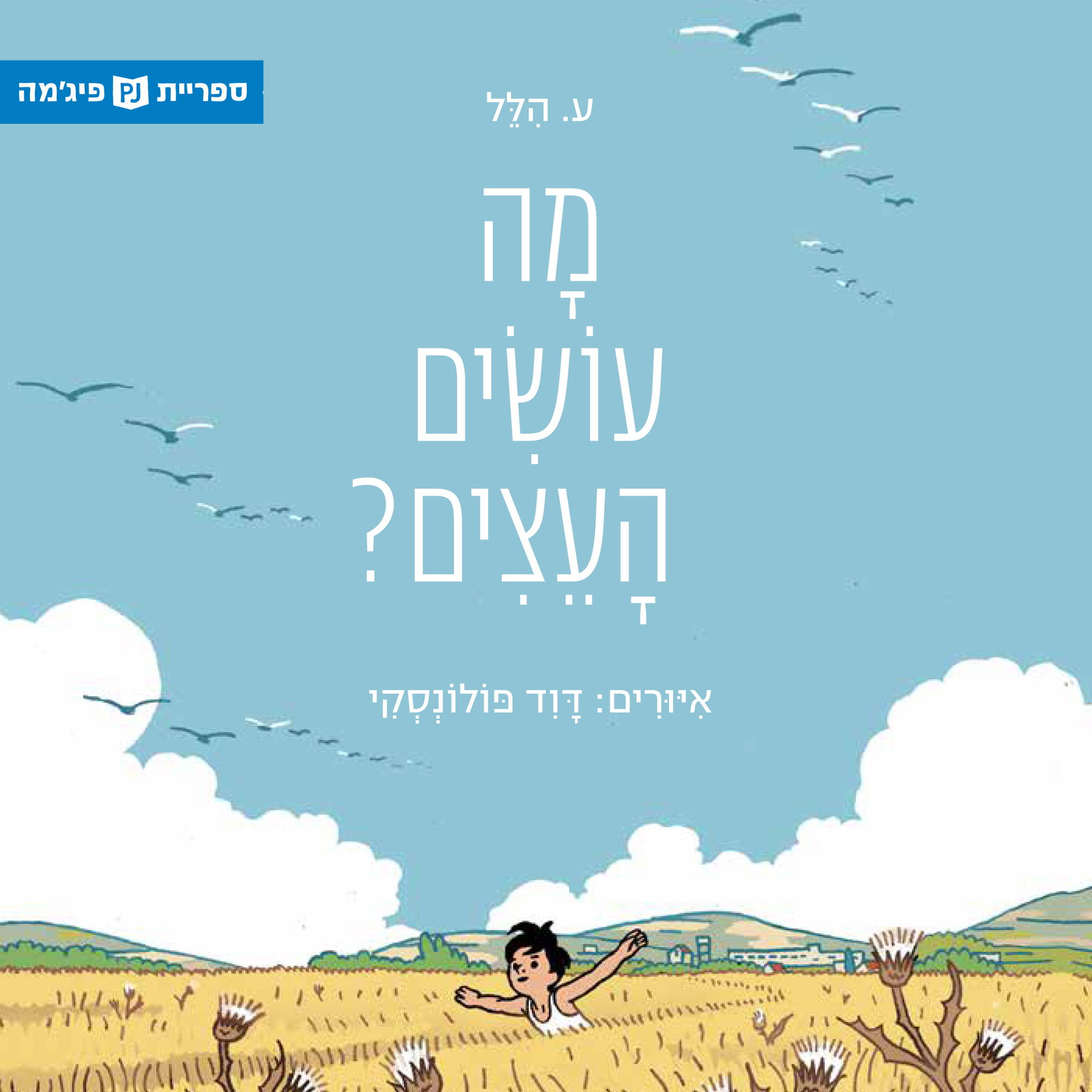 What do the Trees do?
What do the Trees do? 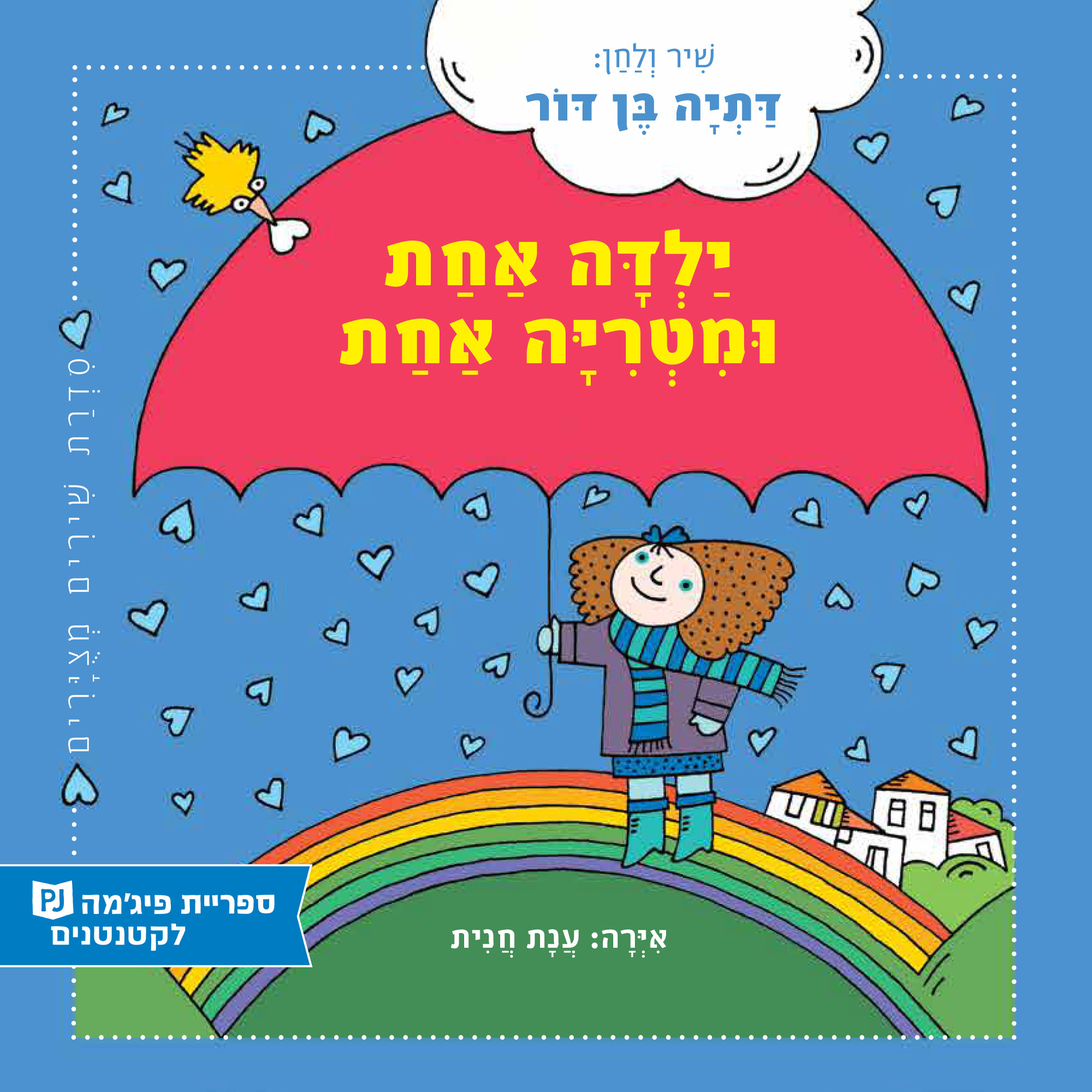 A Girl with an Umbrella
A Girl with an Umbrella ![כריכת הספר What? What? A Potato! [Mah? Mah? Tapuah Adamah!]](https://www.pjisrael.org/wp-content/uploads/2024/04/מה-מה-תפוח-אדמה-כריכה-על-ריבוע-לאתר.jpg) What? What? A Potato! [Mah? Mah? Tapuah Adamah!]
What? What? A Potato! [Mah? Mah? Tapuah Adamah!] 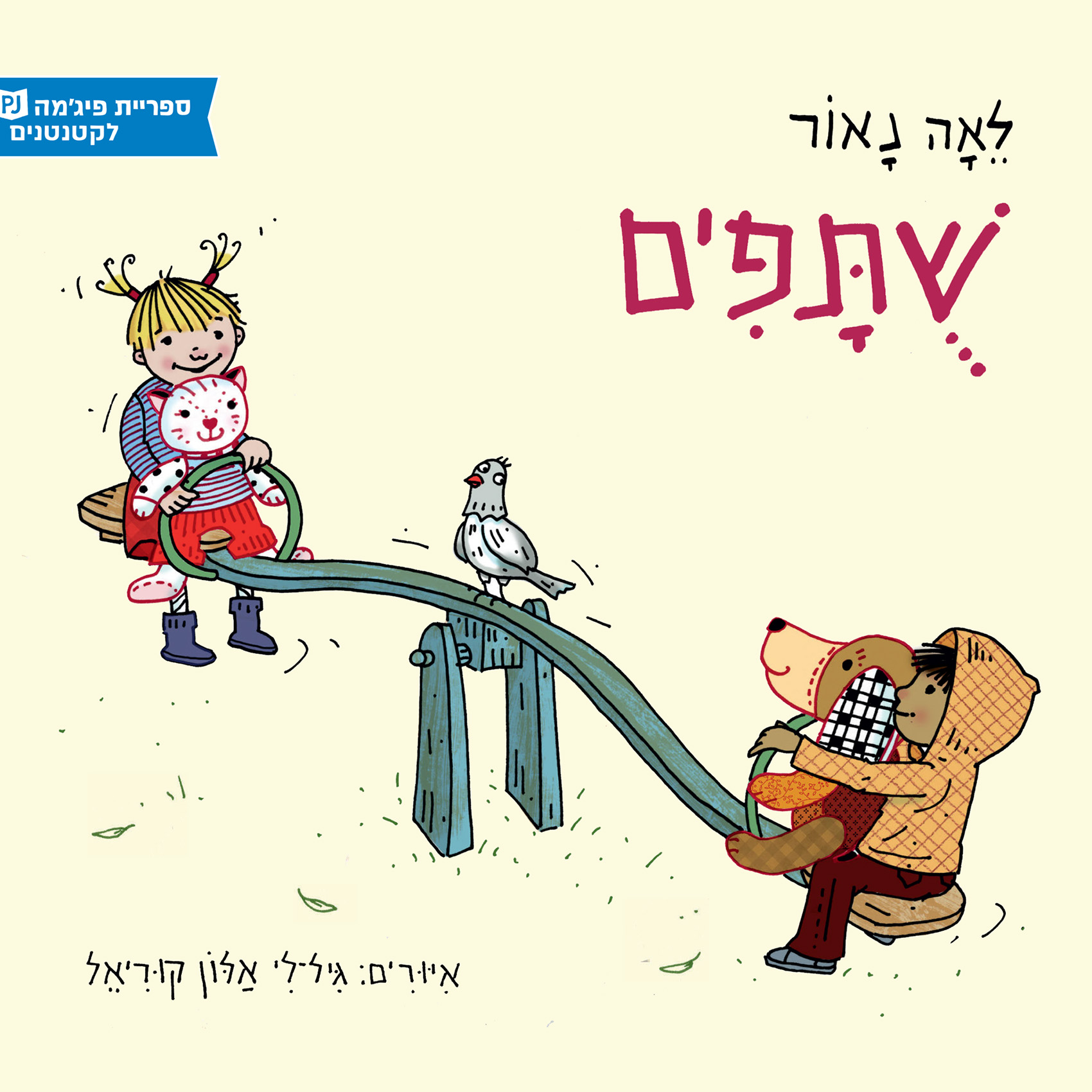 Partners
Partners 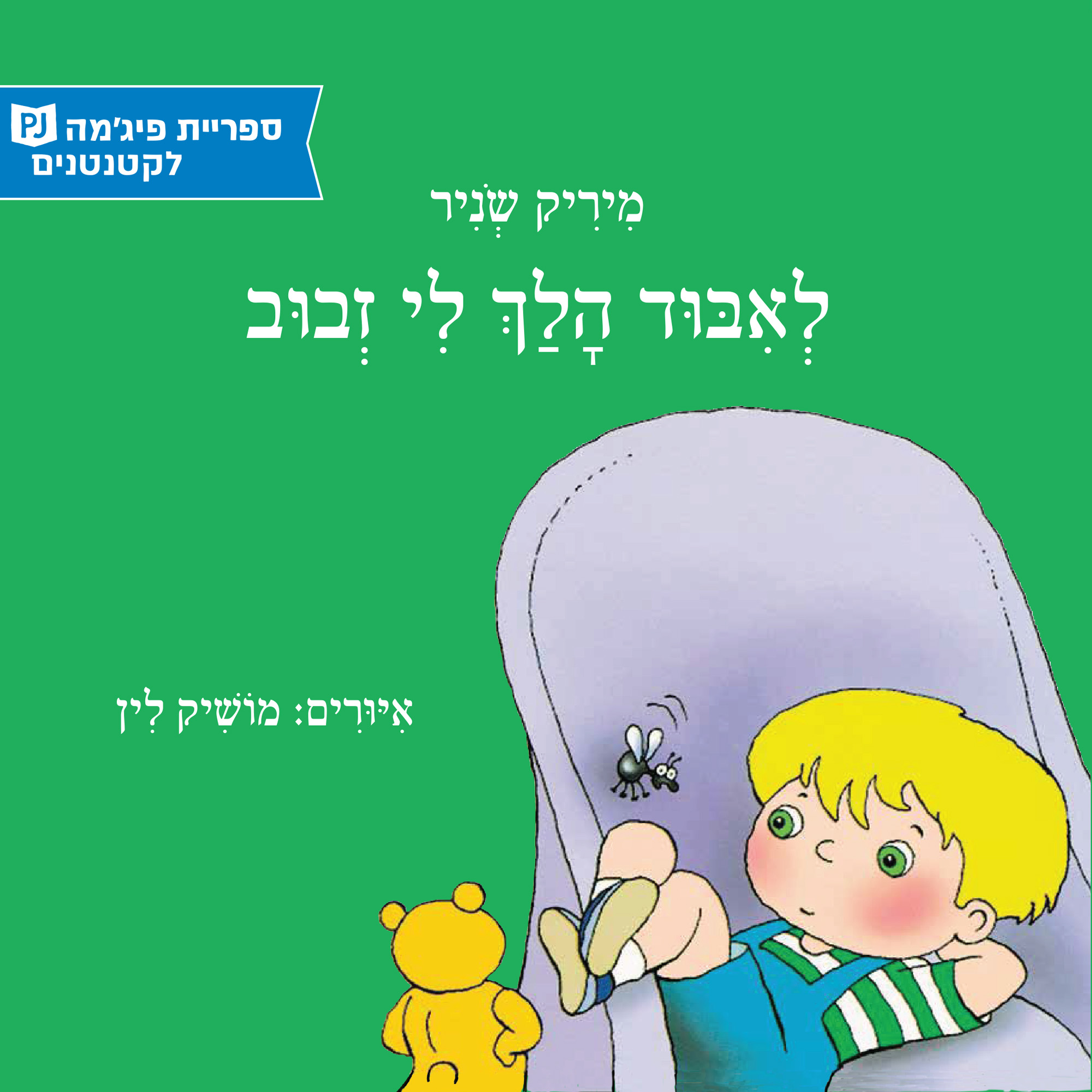 The Fly That Got Lost
The Fly That Got Lost  All Kinds of Animals and Me
All Kinds of Animals and Me 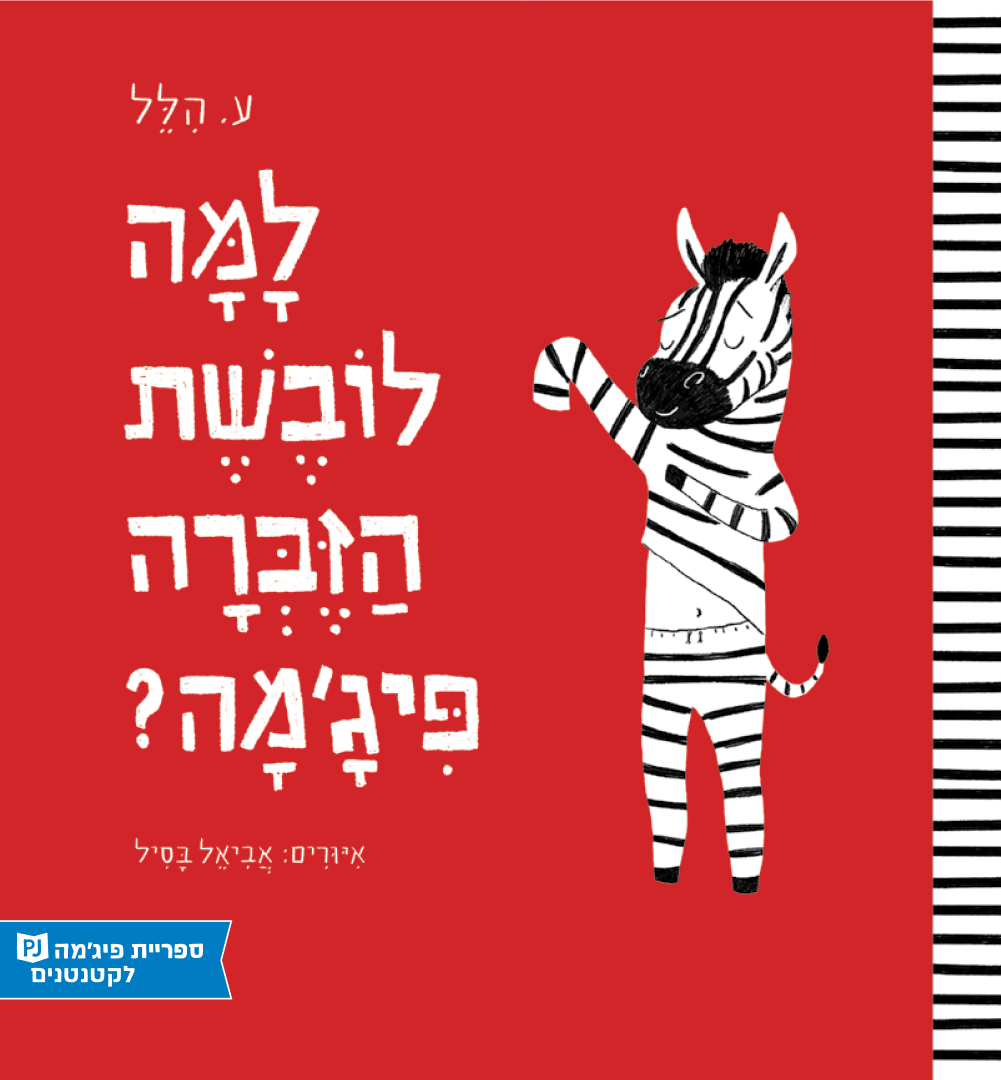 Why is the Zebra Wearing Pajamas?
Why is the Zebra Wearing Pajamas? 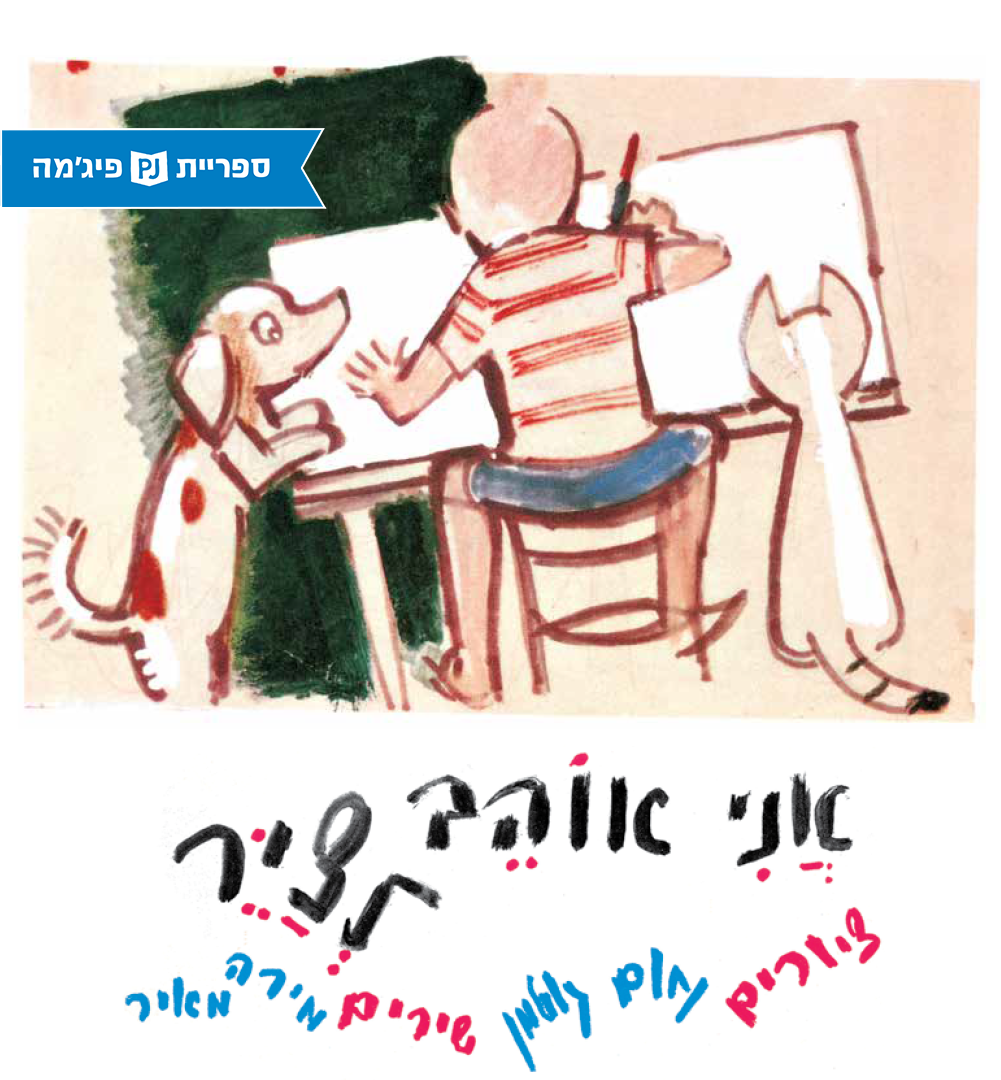 I Love Drawing
I Love Drawing 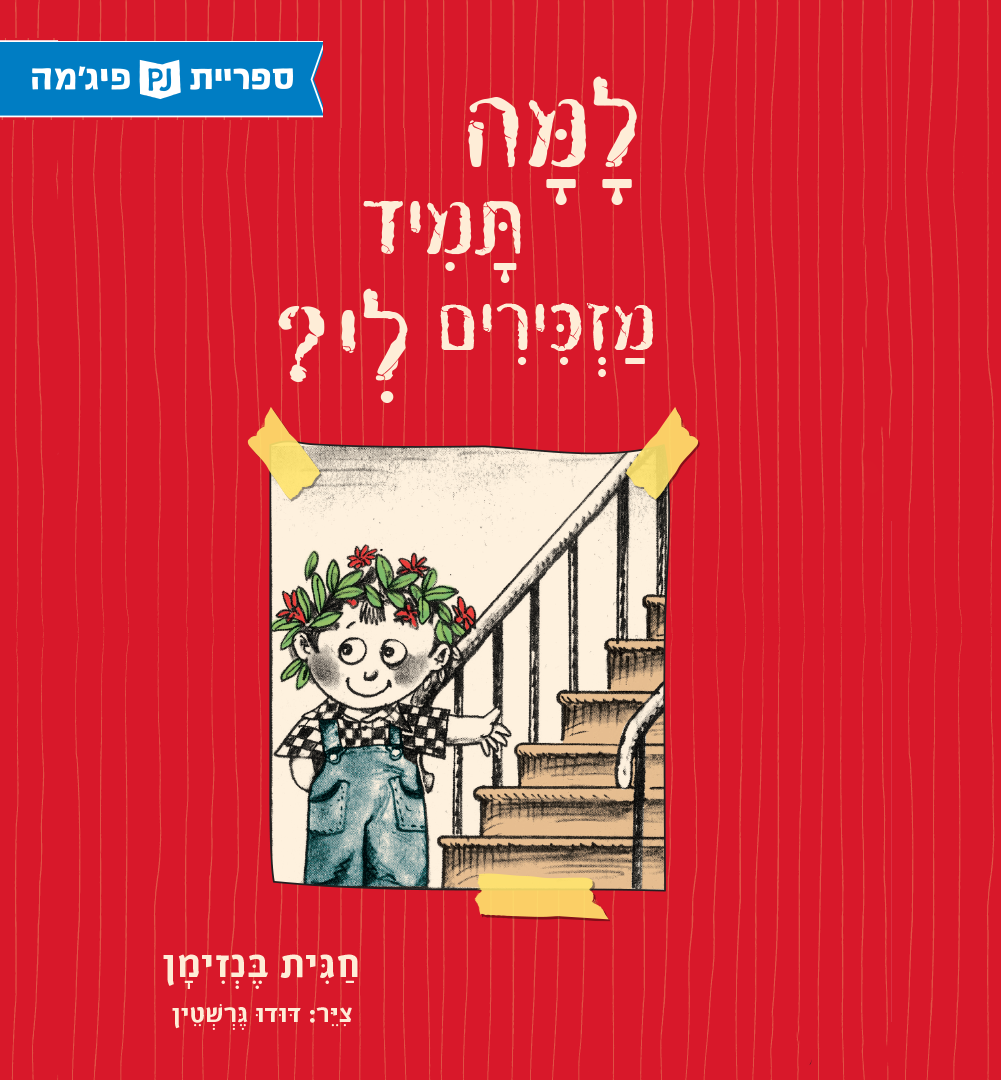 Why Do They Always Remind Me?
Why Do They Always Remind Me? 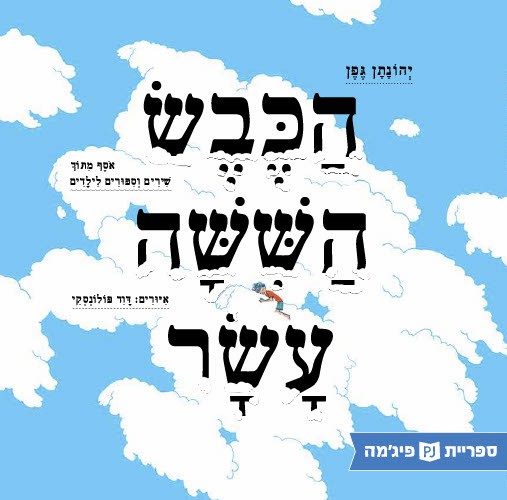 The Sixteenth Sheep
The Sixteenth Sheep 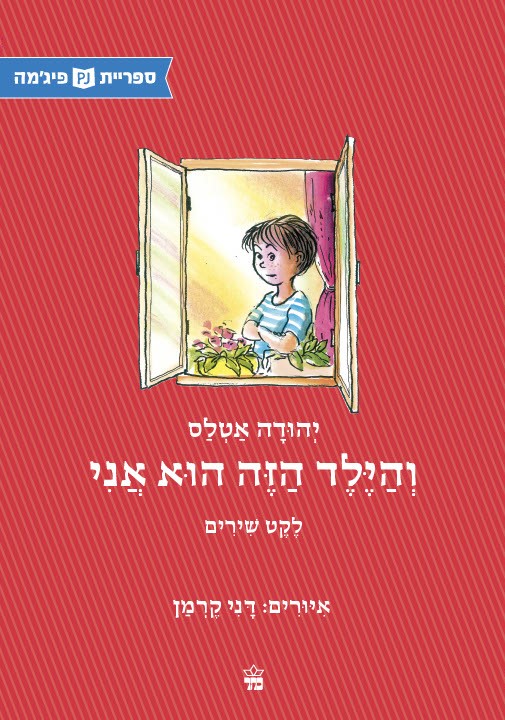 It’s Me
It’s Me 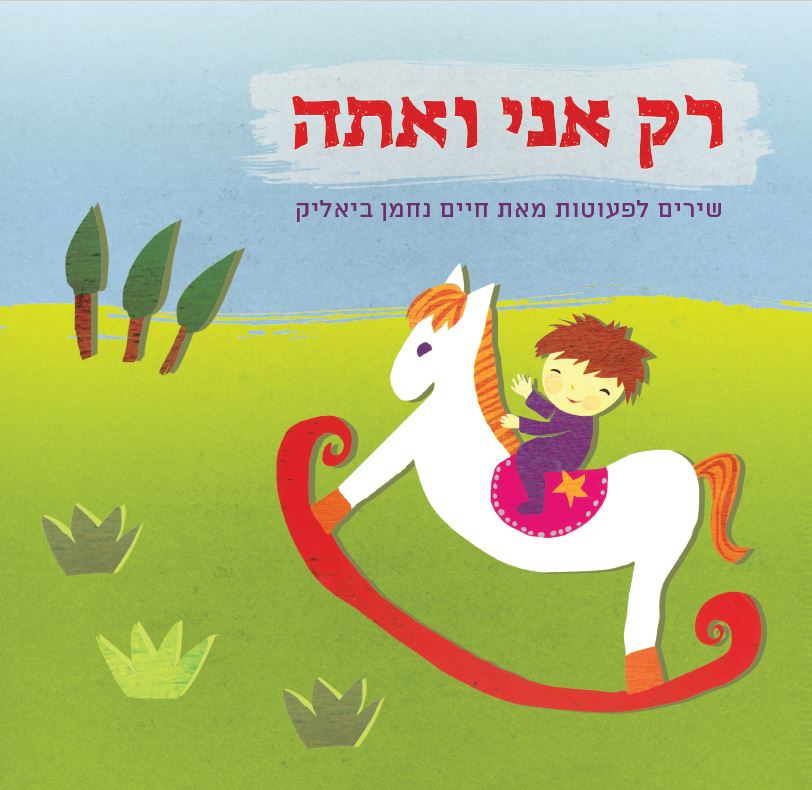 Just You and Me: Songs for Toddlers by Bialik
Just You and Me: Songs for Toddlers by Bialik 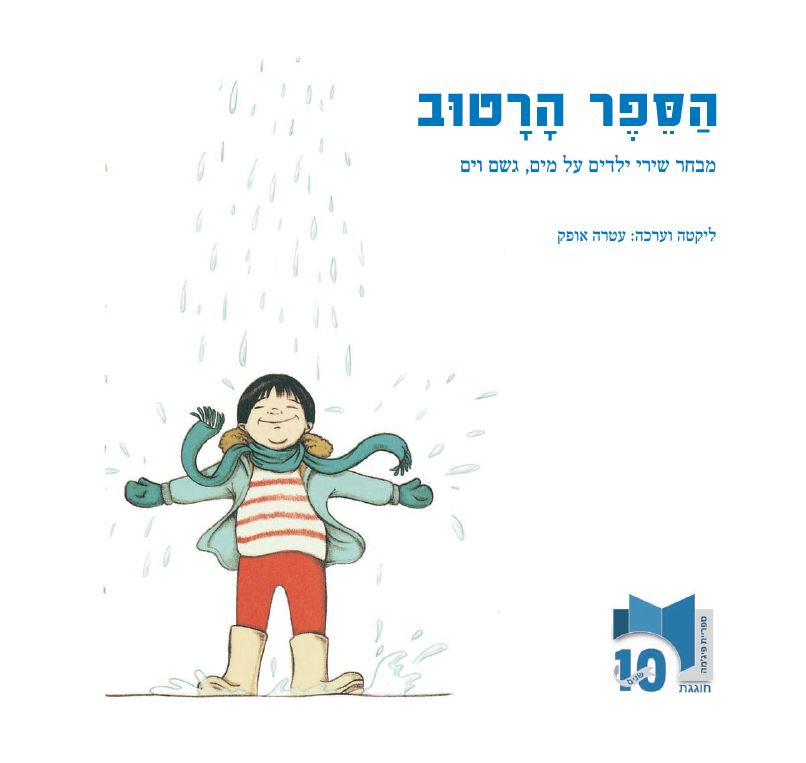 The Wet Book
The Wet Book 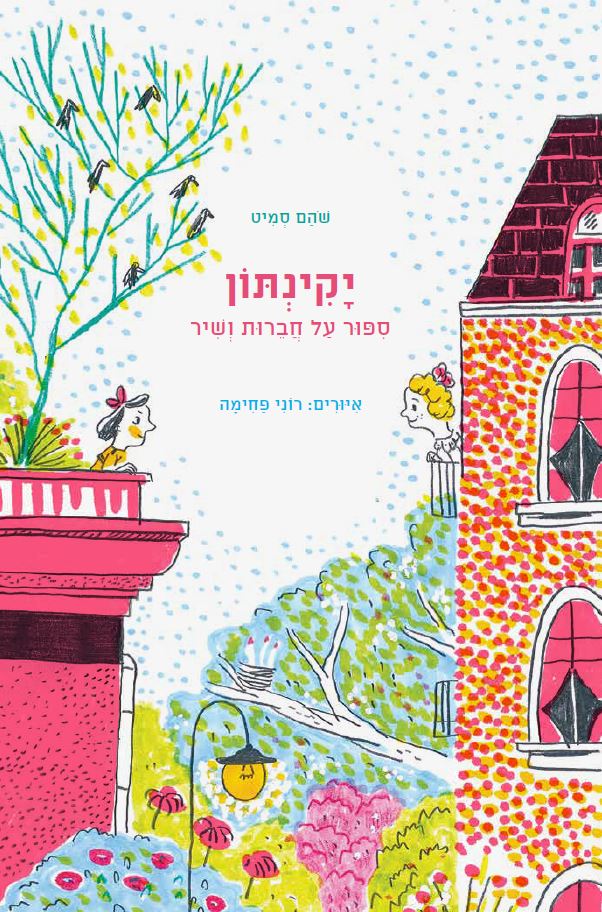 Yakinton: A Story about Friendship and Song
Yakinton: A Story about Friendship and Song 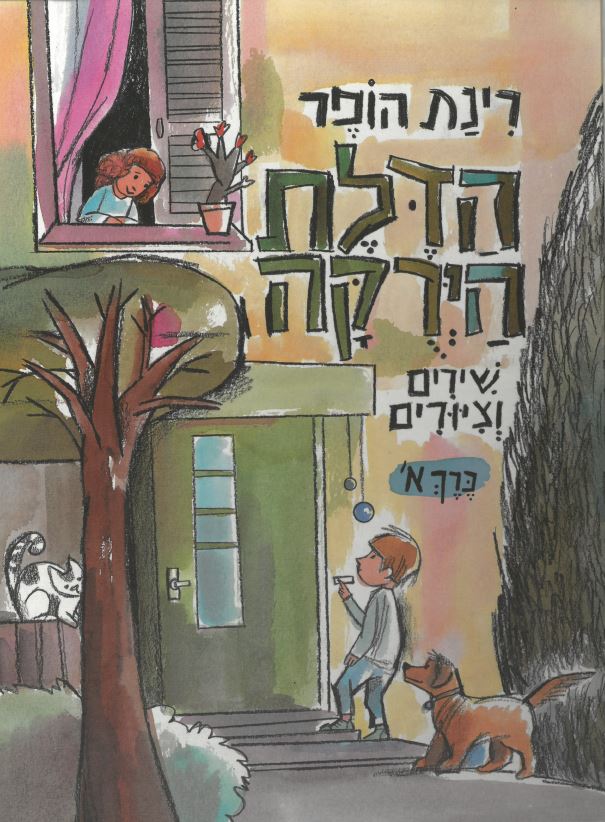 The Green Door
The Green Door 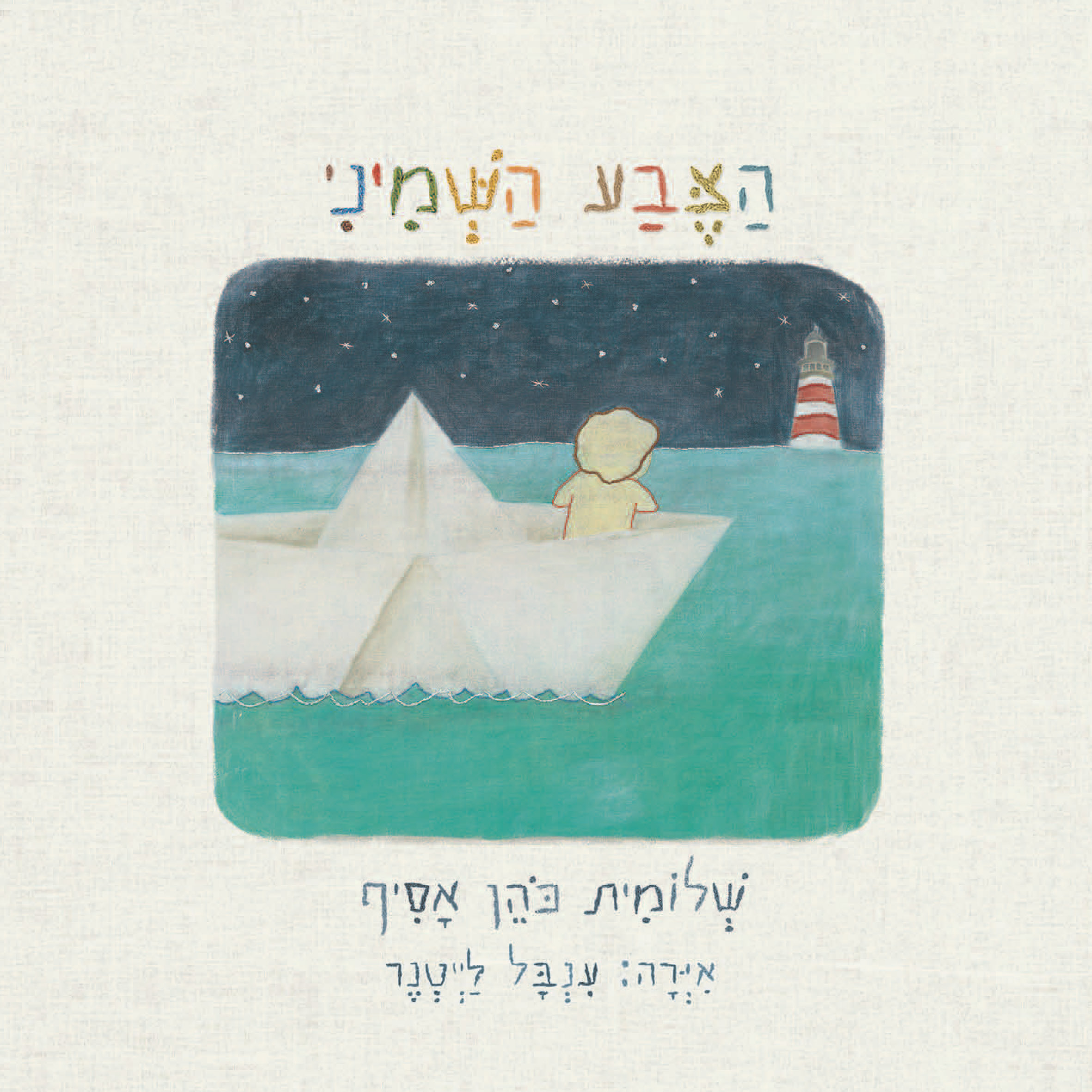 Color Number Eight
Color Number Eight ![כריכת הספר Mr. Savyon [Senecio] and Ms. Rakefet [Cyclamen]](https://www.pjisrael.org/wp-content/uploads/2017/12/מר-סביון-וגברת-רקפת.jpg) Mr. Savyon [Senecio] and Ms. Rakefet [Cyclamen]
Mr. Savyon [Senecio] and Ms. Rakefet [Cyclamen] 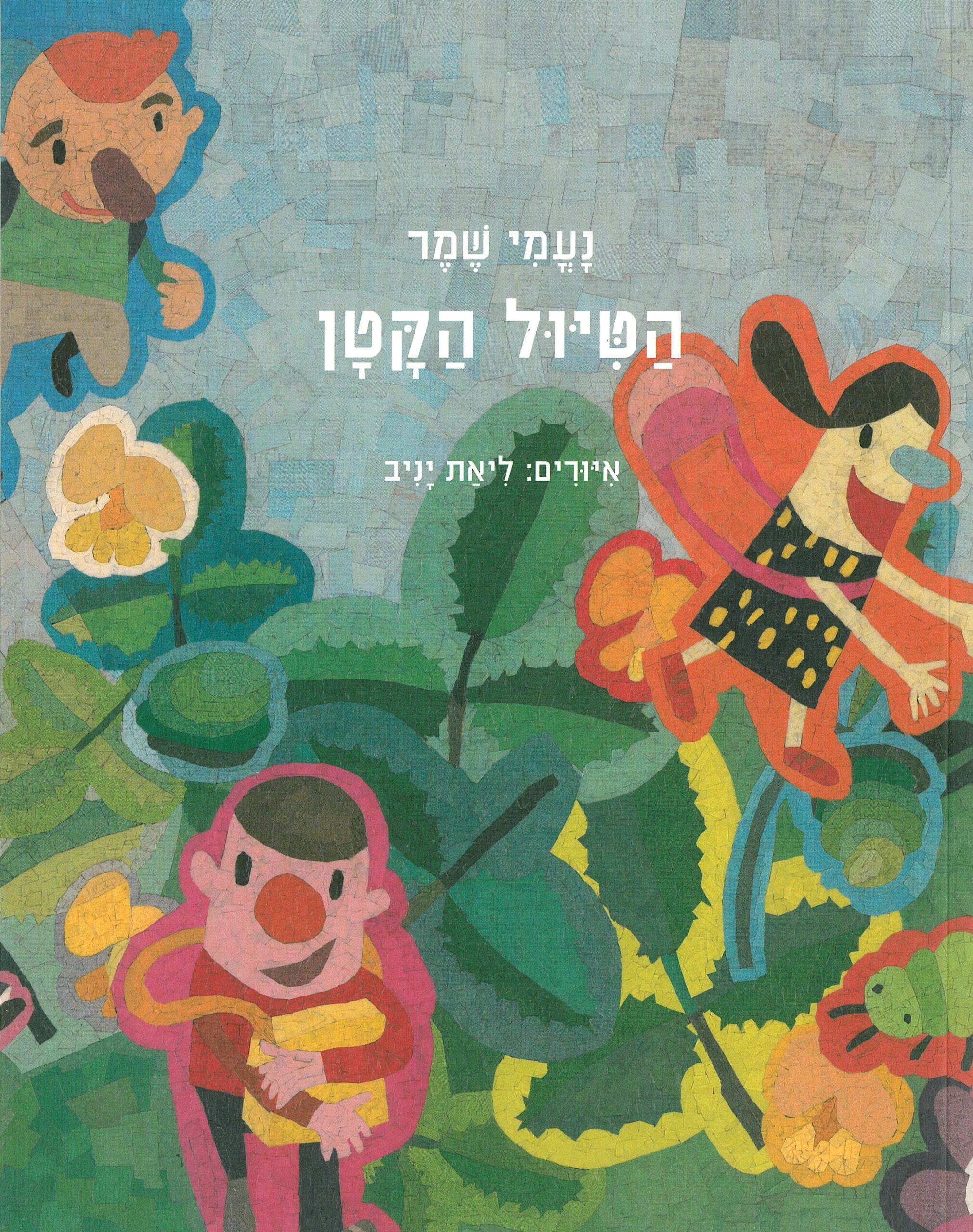 A Short Walk
A Short Walk 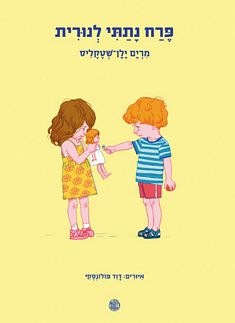 I Gave A Flower to Nurit
I Gave A Flower to Nurit 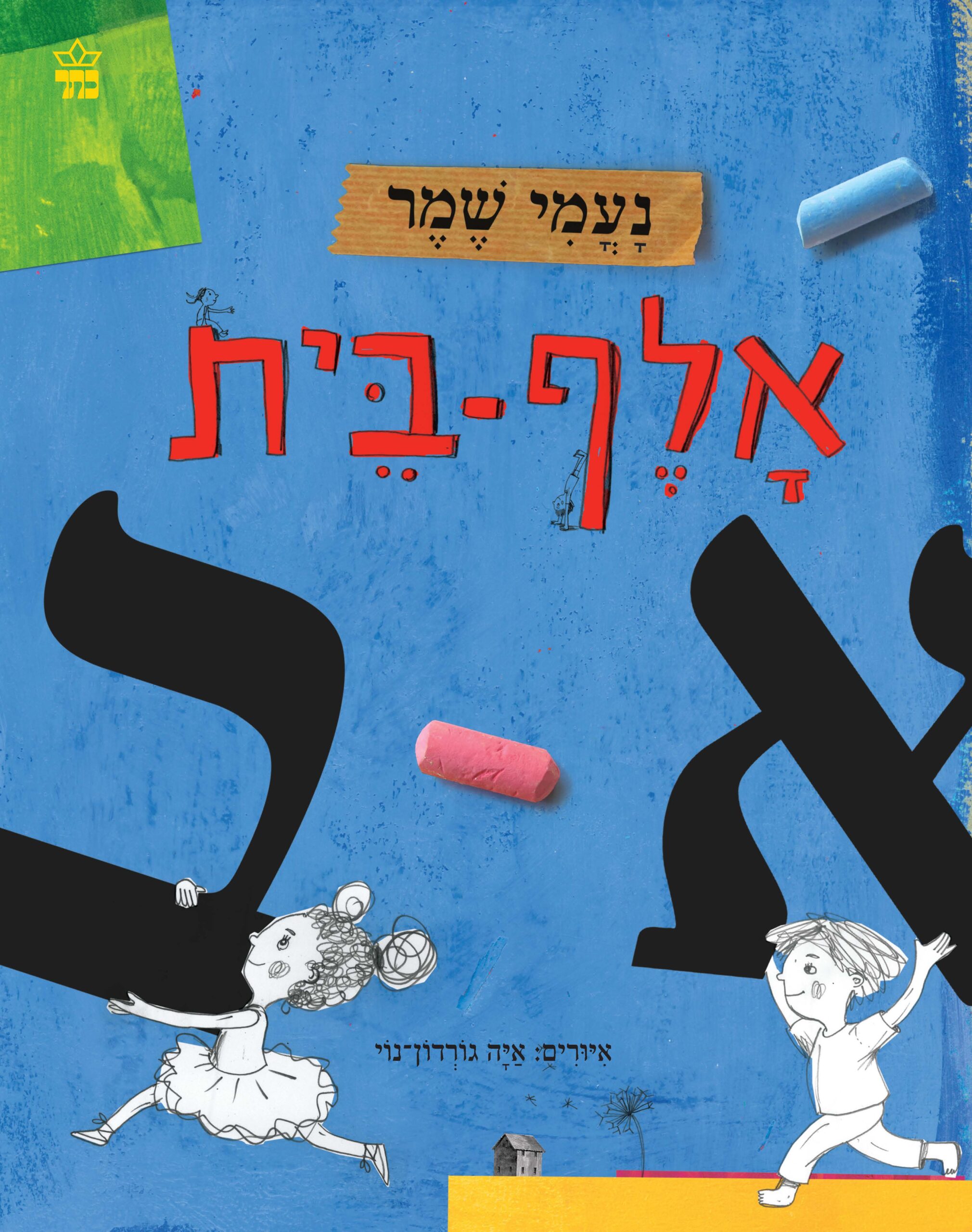 Alef-Beit
Alef-Beit 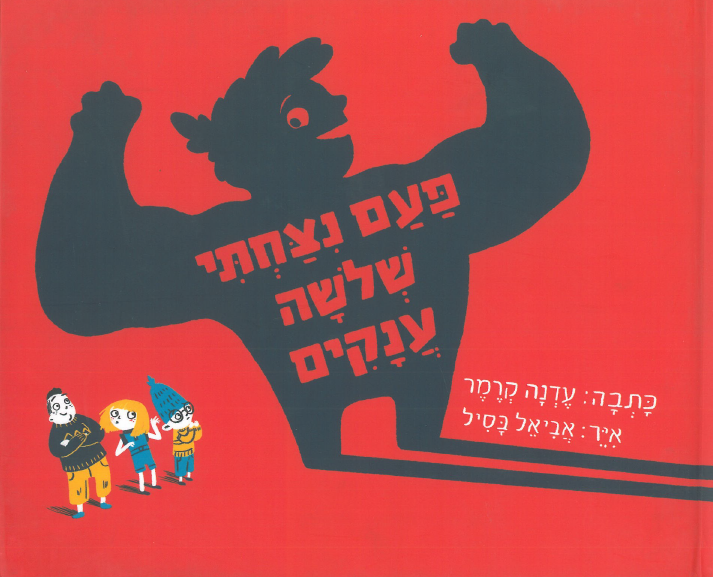 Once I Knocked Down Three Giants
Once I Knocked Down Three Giants 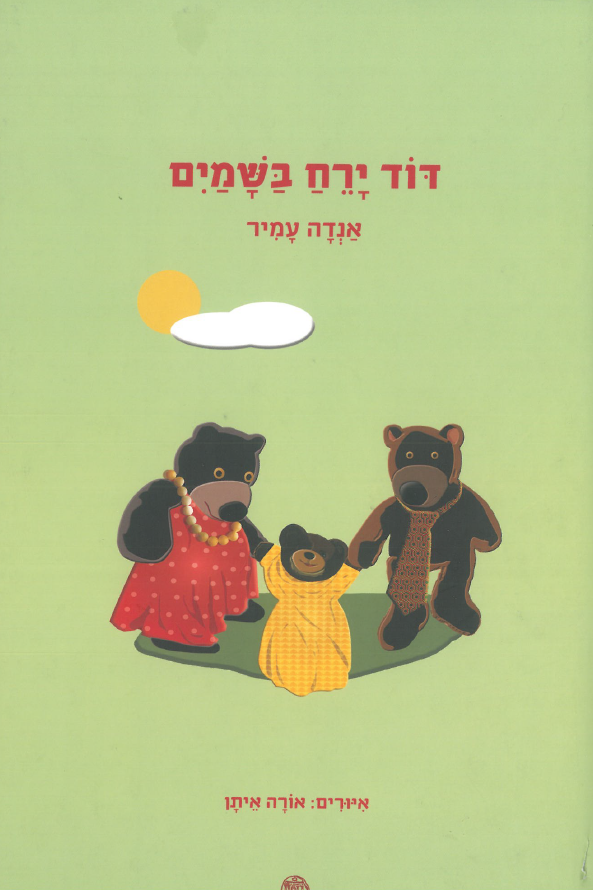 Uncle Moon in the Sky – Collected Poems
Uncle Moon in the Sky – Collected Poems 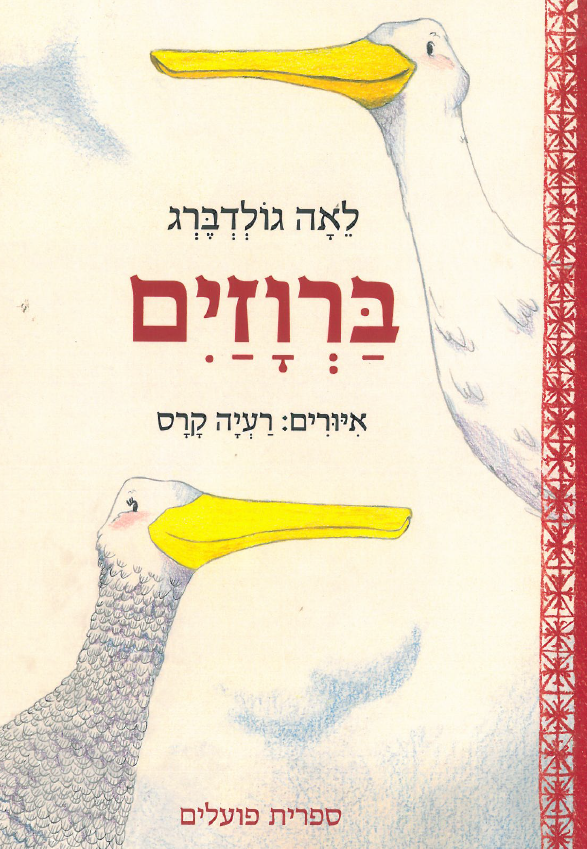 Two Ducks
Two Ducks  קְרִיאָה
קְרִיאָה שִׂיחָה
שִׂיחָה יְצִירָה
יְצִירָה חֵקֶר
חֵקֶר שֵׁמַע
שֵׁמַע הַשְׁרָאָה
הַשְׁרָאָה מִשְׂחָק
מִשְׂחָק לָצֵאת הַחוּצָה
לָצֵאת הַחוּצָה בִּשּׁוּל
בִּשּׁוּל כְּלָלִי
כְּלָלִי סִרְטוֹנִים
סִרְטוֹנִים הַעֲשָׁרָה
הַעֲשָׁרָה הַמְחָשָׁה
הַמְחָשָׁה שִׁלּוּב הַסֵּפֶר
שִׁלּוּב הַסֵּפֶר חֲגִיגָה
חֲגִיגָה קִשּׁוּר
קִשּׁוּר

